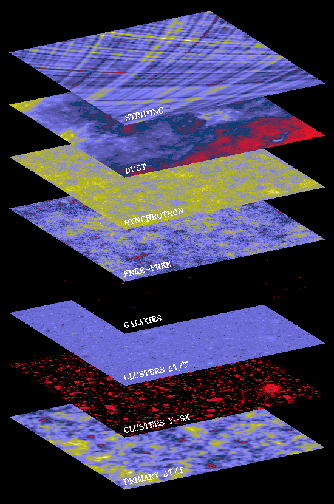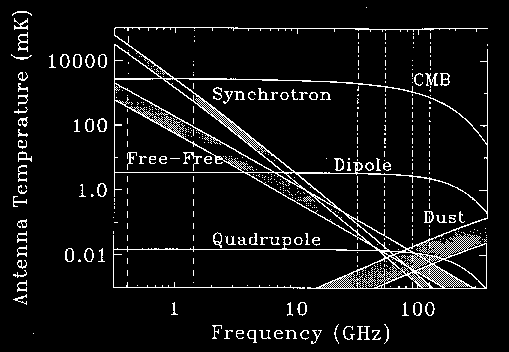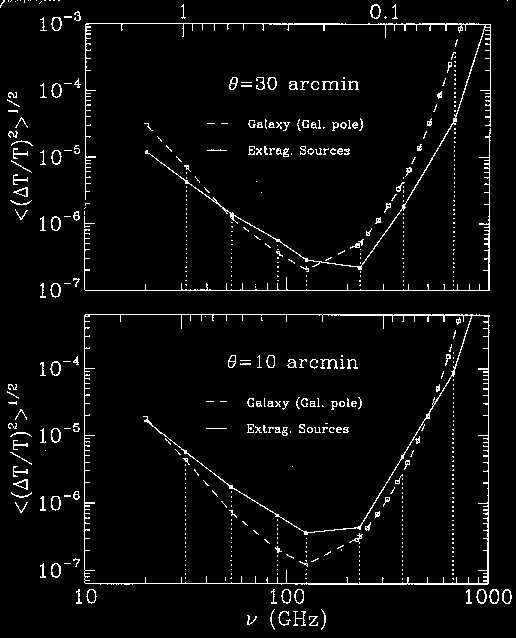

This figure shows the kind of foregrounds and issues involved in separating out the interesting and cosmological signals
The extraction of the cosmological background fluctuations down to a few arcminutes
and with a sensitivity per pixel of about
10E-6 in T/T requires
a good separation of the different components of the background.
More specifically, independently of their own astrophysical interest which is
developed below, one needs to identify the extragalactic background due to
weak unresolved extragalactic sources, the diffuse but not uniform
foregrounds due to interstellar dust, galactic free-free and synchrotron
emission, interplanetary dust and bodies.
The expected spectrum of these
various components and of their fluctuations are shown as a function of
frequency and distribution on the sky in Figures 1.2 and 1.3.
The strategy proposed here to do this separation to the accuracy required
by the ambitious cosmological objectives outlined above is based on two factors:
near-total sky coverage, which will allow accurate modelling of these
components where they are strongest on the sky; and a broad spectral
coverage to allow the measurement of their spatial structure or the
detection of the sources at frequencies where they stand out above the
cosmological background fluctuations.

One component of the foreground is the zodiacal emission from interplanetary dust. This emission as measured by the IRAS satellite at 12 and 25 microns is smooth down to a few arc minutes scale over most of the sky. The only significant components which can affect the background measurements in the far infrared are the emission of asteroids, comets and cometary trails. As the earth moves on its orbit, these sources are seen against the deep sky from a different perspective. They are thus easy to remove from the data by comparing observations of the same part of the sky taken a few days or weeks apart. All these sources being relatively warm, they will be best detected in the highest frequency channel.
Similarly, the dust emission from infrared cirrus and from normal spiral galaxies, as well as that from starburst galaxies, are strongest in the highest frequency channel. Figure 1.3 shows the level of fluctuations expected from these components.

The final limitations are expected to be due to the residual inaccuracies in the component separation. For spiral and starburst galaxies they are dominated by the fluctuations of the background due to weak sources undetected in the highest frequency channel. For cirrus they will be dominated by the possible presence of cold interstellar dust with a different distribution from that of the dust seen by IRAS. In both cases the highest frequency channel will be used in combination with the IRAS data to study the properties of the long wavelength spectrum of these sources. The choice of the frequency of this channel will depend on a trade-off between the required sensitivity to detect the sources (better at higher frequencies) and the identification of colder components not seen by IRAS.
Return to the COBRAS/SAMBA Information page for a more complete description of COBRAS/SAMBA.
Return to the Smoot Group page for a complete description of Dr. Smoot's group's research activities.